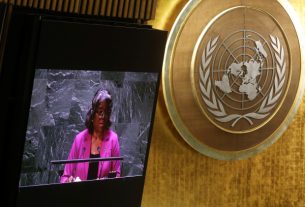In the Italian town of Nepi last year, a school covered floorspace in sheets and asked children to draw how they would change the urban layout. Elsewhere in the town, a care centre for elderly people quizzed them on the same topic in a questionnaire.
The drawings by the children and answers from the care centre’s occupants touched on issues affecting wellbeing including water, food, energy and social interaction. Sustainability was also a primary concern, with children even coming up with an idea that resulted in a planned rain garden for water purification.
People power
Both groups in Nepi, which has a population of about 10 000 and is located 50 kilometres north of Rome, took part in a research project that received EU funding to help spur the development of more environmentally sustainable, socially inclusive and aesthetically pleasing urban areas.
‘It’s more of a bottom-up, people-centric approach – starting from the people living in the cities themselves,’ said Alessia Peluchetti, an urban-simulation engineer at Italy-based Rina Consulting, which manages the project and specialises in energy, transport and infrastructure development.
Called EHHUR, the project began in October 2022 and is due to run through September 2025.
The initiative is also getting urban residents and businesses involved in regenerating cities in Belgium, Croatia, Denmark, Greece, Portugal and Turkey.
The project takes inspiration from the New European Bauhaus (NEB) initiative to make living in Europe more sustainable, enriching and inclusive. The EU is organising an NEB festival in the Belgian capital Brussels on 9-13 April.
EEHUR also supports the European Green Deal seeking to make the EU climate neutral by 2050.
Cities are central to Europe’s climate goal because they’re home to around three-quarters of EU residents and are responsible for most of the continent’s energy consumption and greenhouse-gas emissions.
Hearts and hands
EHHUR is an acronym for “Eyes Hearts Hands Urban Revolution” – meant to capture the visual, social and practical considerations driving the project.
“
We need to create spaces that are attractive and help reduce inequalities.
‘If we want people to use city spaces, we need to create spaces that are attractive and help reduce inequalities,’ said Peluchetti.
Energy efficiency is one focus of EHHUR, which is harnessing new technologies as well as the arts.
Planned renovations for energy savings at two primary schools and a university in the northern Greek city of Kozani, for example, include better heat insulation and rooftop solar panels.
Local residents were involved in the design by helping decide on the aesthetics of the refurbished buildings. The renovations are scheduled to start within six months.
In the northern Portuguese municipality of Maia outside Porto, EHHUR researchers plan to organise events in which local artists will perform on the street in July 2025. One spectacle will be a puppet show. The aim is to celebrate the talents and culture of residents and facilitate integration in the community.
In the northern Belgian municipality of Zoersel, a renovated library will host local-language lessons for foreigners in a bid to strengthen integration.
Three other key urban demonstration sites under the project are Høje-Taastrup in Denmark, Osijek in Croatia and Izmir in Turkey. All seven places – including Nepi, Kozani, Maia and Zoersel – are dubbed “lighthouse districts”.
The overall aim is to build a sense of joint ownership of and investment in shared spaces.
In Høje-Taastrup, an “energy community’’ will be established for local residents to decide on their preferred clean-power options such as solar panels and electric-vehicle charging points.
In Izmir, a historic shopping centre will undergo regeneration to create a craft and cultural space. The aim is to strengthen public awareness of the history of the city – one of the oldest in the Mediterranean world and known as Smyrna in antiquity – as well as bonds among people.
“Meanwhile spaces”
Cities across Europe are full of vacant buildings, empty plots of land and underused areas – all of which another EU-funded project believes can be tapped to accelerate regeneration.
Named T-Factor, the project has demonstrated temporary-use options for such spots and describes them as “meanwhile spaces”. It started in June 2020 and is due to run through May 2024.
‘We have been trying to understand how we could turn empty and transient spaces into opportunities for more inclusive and equitable urban regeneration,’ said Laura Martelloni, who co-leads T-Factor and is a designer at ANCI Toscana, the regional network of Tuscan municipalities in Italy.
Six test sites in Italy, Lithuania, the Netherlands, Portugal, Spain and the UK are part of the project. They range from the Euston neighbourhood in London to the former industrial site of Zorrotzaurre in Bilbao.
More inclusive
In Euston, community festivals and engagement through arts were developed to make public spaces more liveable, safe and convivial.
T-Factor worked with community groups to help them have a say within official bodies overseeing the area’s redevelopment. That means local residents can influence urban-development decisions and become more empowered to champion “meanwhile uses” for inclusive participation.
“
Cities continuously need regeneration because they change so fast.
A similar story occurred in Zorrotzaurre.
There, T-Factor worked for the sustainable use and recycling of resources among creative associations, digital innovators and designers and residents. This experience is now leading to the creation of a civic design council in which involved Bilbao residents will have more of a say over future development of the city.
For example, they could use their voice in the council to turn the successful temporary use of a space as a market into a permanent feature.
T-Factor plans to publish a paper in April 2024 with recommendations for spreading the temporary use of city spaces and making it a stronger feature of urban regeneration across Europe.
One planned recommendation is for temporary-use projects to take a “portfolio approach” so that complex challenges such as climate stress and social inequalities are tackled simultaneously rather than in isolation.
Another draft proposal is for a new generation of professionals with expertise in the field to be encouraged and to become resources within municipal organisations as they develop temporary-use arrangements.
In general, policymakers should experiment with temporary uses of public spaces with a view, when such tests prove successful, to making them more lasting, according to Martelloni. She signalled that the task itself is permanent.
‘Cities continuously need regeneration because they change so fast,’ Martelloni said.
Research in this article was funded by the EU’s Horizon Programme. The views of the interviewees don’t necessarily reflect those of the European Commission. If you liked this article, please consider sharing it on social media.
New European Bauhaus
A century after it emerged in Germany, the Bauhaus school of art, architecture and design is getting a rebirth in Europe in a bid to improve urban life.
The New European Bauhaus (NEB) aims to help cities across the EU become less polluting and more attractive through artistic, cultural and technological projects reaching many millions of residents.
Initiated by the European Commission in 2020, the NEB has three prime goals: reduce environmental harm including climate change, tackle social inequalities such as exclusion and spruce up public areas.
Changing the design and use of urban spaces and structures is central to the whole undertaking, with sustainability, inclusion and aesthetics shaping the overall vision.
While serving policy goals set at EU level, the NEB relies on bottom-up initiatives undertaken by a range of people and organisations. These include city dwellers, artistic groups, architectural experts and local businesses, authorities and students.
Research is a main feature of the NEB, with almost €160 million for EU projects in 2021-2024.



